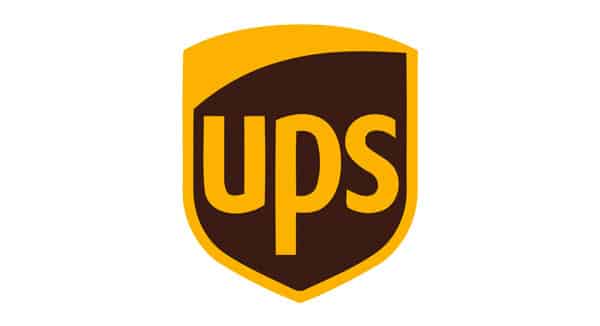Introduction

Creating high-quality blog content requires effort, creativity, and strategy. However, once the blog post is published, many businesses and content creators stop there. The truth is, simply hitting “publish” is not enough. Blog content that isn’t distributed effectively may not reach the audience it deserves. In the ever-evolving digital landscape, your blog content needs to go beyond its original platform to make an impact.
This is where content repurposing comes into play. Repurposing is the process of taking a piece of content and reusing it in different formats for multiple platforms. It extends the reach of your original post, improves SEO, reinforces key messages, and saves you time in content creation. Instead of constantly creating new content from scratch, repurposing allows you to maximise the value of what you’ve already produced.
In this guide, we’ll explore the importance of repurposing blog content, the benefits it brings, and practical methods for adapting your posts to thrive on platforms like LinkedIn, Instagram, YouTube, TikTok, email, and more. Whether you’re a brand, a solo entrepreneur, or a content marketing agency, this strategy can transform the way you approach content distribution.
Why Repurposing Content Is Essential
Increases the Lifespan of Your Content

Most blog posts have a short attention window. Even if it performs well on the day it’s published, it tends to lose momentum in a matter of days. Repurposing breathes new life into that post. When you transform it into multiple formats for different platforms, you significantly increase its lifespan and relevance over time.
Reaches Different Audience Segments

Not everyone consumes content in the same way. Some people prefer to read long-form articles, others scroll through quick carousels on Instagram, watch short videos on TikTok, or browse headlines on LinkedIn. Repurposing ensures your message meets your audience where they are, in a format they prefer.
Enhances SEO and Backlink Opportunities

Repurposing allows you to interlink different forms of content back to your original blog, boosting its visibility on search engines. Additionally, when you publish valuable snippets or summaries on other platforms, you open up more opportunities for backlinks, especially if your content is referenced or shared by others.
Saves Time and Increases ROI

Creating new content from scratch for each platform can be overwhelming. Repurposing streamlines your content creation process by building off of what you’ve already researched and written. This means less time ideating and more time promoting, engaging, and converting.
Strategic Foundations Before Repurposing
Identify Evergreen vs. Timely Content

Not all content is created equal. Evergreen content—topics that remain relevant over time—are perfect candidates for repurposing. These could be how-to guides, industry insights, or frequently asked questions. Timely content, such as news or event-based blogs, can also be repurposed but may have a shorter shelf life. The key is to evaluate the potential for each post.
Define Your Primary Goals

Are you trying to build brand awareness, drive traffic to your website, improve engagement on social media, or build an email list? The way you repurpose content should align with your goals. For example, short reels and TikToks are great for visibility, while detailed LinkedIn posts may build thought leadership.
Know Your Audience on Each Platform

Each platform has its own tone, format, and audience expectations. Instagram users love visual storytelling, while LinkedIn users expect professional insights. Twitter (now X) is all about short-form commentary, and YouTube requires a visual narrative. Tailor your repurposing strategy to the norms and behaviours of each platform.
Methods for Repurposing Blog Content
1. Social Media Posts

Instagram Carousels
Transform key sections of your blog into bite-sized slides. Each slide can represent a step, a tip, or a key takeaway. Carousels are highly engaging, save-worthy, and are often shared, making them a strong driver of visibility.
LinkedIn Thought Leadership Posts
Take the core message of your blog and write a mini-article or opinion piece around it. Add a personal touch or commentary to make it resonate with your professional network. End with a question to encourage engagement.
Twitter/X Threads
Break your blog post down into a Twitter thread. Each tweet should carry one idea or insight, creating a narrative flow that keeps readers scrolling. Link back to the original post at the end.
Facebook or LinkedIn Groups
If you’re part of niche communities or groups, share relevant parts of your blog as a value post. Frame it as advice or a resource rather than just a link drop.
2. Short-Form Videos

Reels and TikToks
Pull out the key tips or takeaways from your blog and turn them into short, punchy videos. Use trends or voiceovers to make the content more relatable. For instance, a blog about “Marketing Trends in 2025” can become a video listicle with text overlays and animations.
YouTube Shorts
Similar to Reels, but with a slightly more educational tone, YouTube Shorts can be a great way to present condensed advice or quote highlights. Add subtitles to increase accessibility.
3. Long-Form Video Content

YouTube Explainers
Turn a blog into a talking-head video or animated explainer. This works particularly well for how-to guides or listicles. You can use tools like Canva, Descript, or even PowerPoint for creating visually rich videos.
Webinars or Live Sessions
Use your blog post as a script or outline for a live session on Instagram Live, LinkedIn Live, or YouTube. This allows you to go deeper into the topic while engaging with your audience in real time.
4. Infographics and Visual Assets

Use tools like Canva or Piktochart to design infographics that summarise the key statistics or steps mentioned in your blog. Infographics are highly shareable and often picked up by other blogs or social media pages, leading to backlink opportunities.
You can also create quote cards, charts, and diagrams that break down complex concepts into visually appealing pieces of content.
5. Email Newsletters

Instead of creating a brand-new email, pull excerpts from your blog post. Use them as hooks in your newsletter, and provide a call-to-action that drives readers to your full article. Alternatively, structure the email as a digest or a “Tip of the Week” taken from your blog archive.
You can also segment your email audience and adapt the blog’s message to suit their specific interests.
6. Audio Content

Podcasts
If you or your team has a podcast, repurpose a blog post as an episode topic. You can read the blog in a conversational tone or use it as a discussion guide for a guest interview.
Audiograms
Short clips of your podcast or voice-recorded segments from your blog can be turned into audiograms (audio + visuals), which perform well on LinkedIn, Instagram, and Twitter.
7. Downloadables and Lead Magnets

eBooks and Whitepapers
Group a series of related blog posts into a longer downloadable resource. Add a professionally designed cover, introduction, and references to create an eBook or whitepaper that can be used to capture leads.
Checklists and Templates
If your blog post provides actionable steps, turn it into a printable checklist or editable template. Offer it in exchange for an email subscription or as a value add-on.
Platform-Specific Tips for Repurposing

- Use carousels for lists and steps.
- Use Reels for short insights and personality-driven content.
- Use Stories to share behind-the-scenes or quick summaries.
- Use Highlights to archive content from your blog themes.
- Prioritise storytelling and personal reflections drawn from your blog.
- Share blog links in comments rather than posts for better reach.
- Create document posts (PDFs) that break the blog into slides.
TikTok
- Turn controversial points from your blog into conversation starters.
- Use trending audio to dramatise a pain point or solution.
- Keep videos under 60 seconds for better retention.
YouTube
- Break your blog into a video series.
- Use the blog’s introduction as your video hook.
- Repurpose videos back into blog embeds to enhance your SEO.
- Pin infographics, quote cards, and checklists.
- Link each pin back to the original blog post.
- Use idea pins to present a summary in story format.
Common Mistakes to Avoid

Repurposing Without Adapting
Copy-pasting the same text across all platforms is not repurposing—it’s duplication. Each platform has its own voice, format, and best practices. Make sure you tailor your repurposed content accordingly.
Ignoring Analytics
Not all content will perform equally well across platforms. Use analytics to see which repurposed formats and posts are getting the most engagement and traffic. Double down on what works.
Skipping Calls to Action
Every piece of repurposed content should serve a purpose. Whether it’s to drive traffic, collect emails, or encourage engagement, include a strong, platform-appropriate call to action.
Overloading One Platform
Distribute your repurposed content across several channels instead of flooding one with all variations. Diversification prevents content fatigue and broadens your reach.
Building a Repurposing Workflow

- Audit Your Blog Archive: Identify evergreen, high-performing, or under-utilised blog posts with repurposing potential.
- Outline Repurposing Opportunities: For each blog, identify 5–10 ways it can be reused.
- Create Platform-Specific Content: Design templates for common formats like carousels, reels, infographics, and quote cards.
- Schedule Smartly: Use tools like Buffer, Later, or Hootsuite to plan your content in advance and space it out.
- Track, Test, Repeat: Analyse performance regularly and experiment with formats and headlines to see what sticks.
Conclusion

Repurposing blog content is no longer a “nice to have”—it’s a strategic necessity. With an ever-expanding list of platforms and diverse audience preferences, a single blog post can no longer live in isolation. By thoughtfully adapting your content for different channels, you amplify its reach, deepen your brand presence, and maximise the return on your content investment.
Think of every blog you write as a seed. Repurposing helps that seed grow into a tree with many branches—each reaching a different audience, achieving different goals, and reinforcing your brand message in new and creative ways.
Start small. Repurpose one blog this week across three platforms. Once you see the results, you’ll realise just how powerful this strategy can be.






















